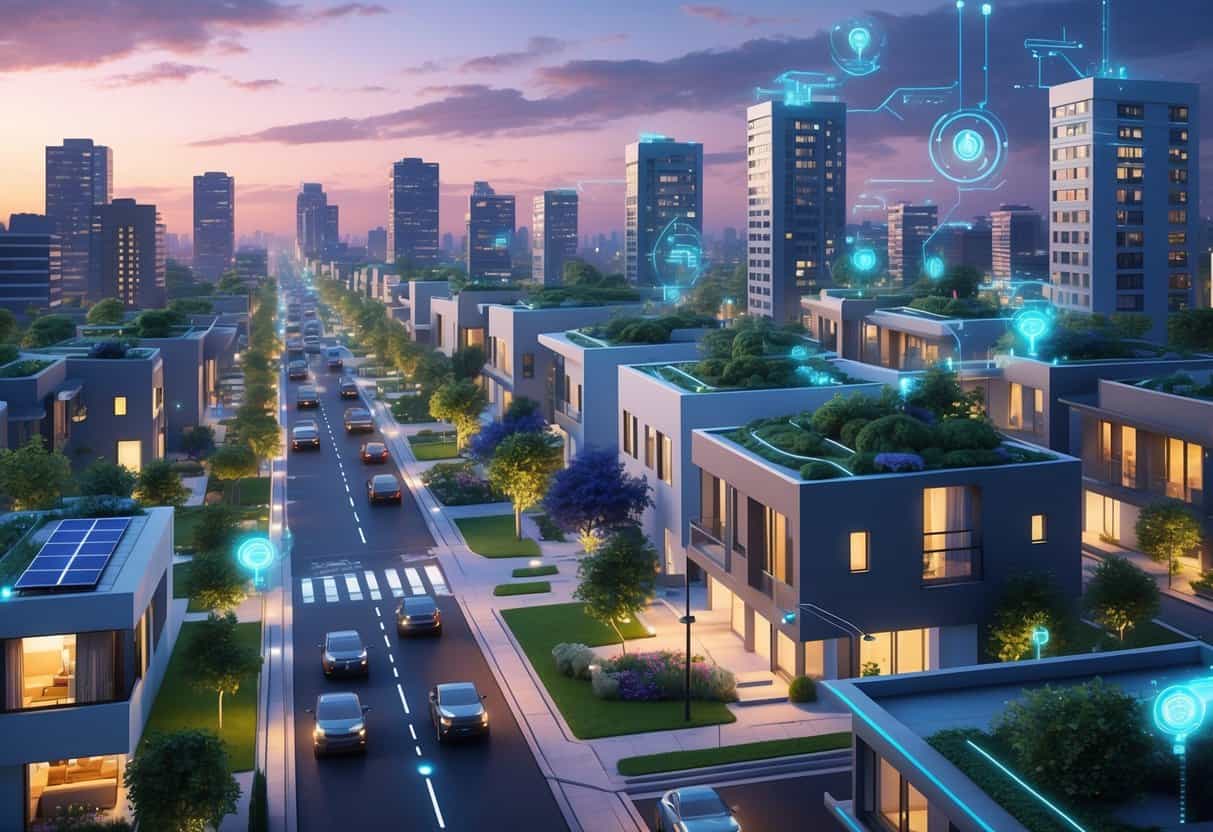Smart home integration is changing the way people live in cities. By connecting devices and systems, city dwellers are getting more comfort, safety, and energy efficiency.
Some cities are ahead of the curve, adopting new tech quickly and building environments where smart homes just work better.

Cities like New York and Washington DC have made big strides in using smart systems to modernize homes and infrastructure. Life’s just a bit easier and more efficient for residents there.
These cities use tools like AI, sensors, and data analytics to link homes with the broader urban network.
If you want to know where smart home tech is really taking off, looking at these cities gives you a glimpse of what’s coming. It’s also a chance to see how urban life is becoming smarter, greener, and, honestly, a little safer.
Key Takeaways
- Smart home technology is growing rapidly in major cities.
- Advanced tech helps improve home efficiency and safety.
- Cities are setting examples for smarter, more connected living.
Pioneering Cities in Smart Home Integration
Smart home technology is moving forward thanks to cities that focus on connectivity, energy use, and convenience. These places are using smart systems in housing so you can live more efficiently—sometimes almost effortlessly.
Amsterdam’s Smart Home Ecosystem
In Amsterdam, smart home integration is all about sustainability. Your home can connect to the city’s energy grid, letting you monitor and cut down on energy use pretty easily.
The city encourages solar panels and smart meters, so you get real-time data about power consumption.
Home automation here means lights and heating adjust to your habits. This keeps you comfortable while cutting energy waste.
Amsterdam teams up with local tech startups to keep improving these systems. Your smart home is rarely out of date.
Singapore’s Connected Living Initiatives
Singapore is all about making life seamless and connected. The city’s built a network where smart devices talk to each other using speedy 5G.
You can control security cameras, lighting, and appliances in a snap.
Safety’s a big deal, so there’s remote monitoring for emergencies like fires or break-ins. The government even offers incentives to help you pick up energy-efficient smart gadgets.
That’s good for your wallet and the environment.
San Francisco’s Technology-Driven Solutions
San Francisco is always on the front edge of tech. Being so close to Silicon Valley, the city gets new devices into homes faster than almost anywhere else.
You’ll see smart thermostats, AI-powered security, and voice assistants everywhere.
The city links these devices to its smart grid. Homes share energy data and help balance demand during those crazy peak hours.
This keeps costs down and shrinks the city’s carbon footprint. And, if you’re into the latest gadgets, tech companies here often roll them out early.
Key Technologies Powering Urban Smart Homes
Urban smart homes rely on fast internet, automation, and solid data security. These work together to make life easier, save energy, and keep your info safe.
IoT Infrastructure and Connectivity
Your smart home lives on a network of connected devices—the Internet of Things, or IoT. Think sensors, smart lights, thermostats, security cameras, all chatting over 5G or Wi-Fi.
Reliable connectivity is a must. Cities with advanced IoT setups let you control your home in real time.
That means less energy waste and more comfort.
Cities also link individual homes to bigger systems. This lets them manage power and water more efficiently.
AI-Based Home Automation Systems
Artificial Intelligence makes your smart home more responsive. AI learns your habits and tweaks lighting, heating, and security without you lifting a finger.
If no one’s home, it’ll turn down the heat or flip off the lights. It can spot unusual activity and send alerts—keeping things safer.
AI automation saves energy and, over time, can lower your bills. Not a bad deal.
Citywide Data Security Practices
Smart homes create tons of data, so keeping it safe is a big deal. Cities are leading efforts to set up strong cybersecurity rules and secure networks.
You’ll want encryption and regular updates to keep hackers out.
Cities often require smart home products to follow strict privacy standards. By keeping your info safe, cities help build trust in this tech.
Societal and Environmental Impact
Smart home tech is having a real impact on both the environment and daily life in cities. It helps you save energy, adds comfort, and supports cleaner living.
Enhancing Urban Sustainability
Smart homes use connected devices to manage water and electricity better. That means less waste and more progress toward sustainability goals.
Sensors can catch leaks early, and smart thermostats adjust heating and cooling so you’re not burning energy you don’t need.
Cities with strong smart home integration push for greener building practices. You get designs that cut your footprint and still feel comfortable.
Improving Quality of Life for Residents
Smart home systems really do make life easier and safer. Automated lighting, security cameras, and voice controls boost convenience.
You can check on your home from anywhere, which is reassuring.
These technologies help create healthier spaces, too. Air quality monitors and smart ventilation work to cut down indoor pollutants.
People living in smart homes often feel less stressed and a bit more at ease—because their homes actually respond to what they need.
Reducing Citywide Energy Consumption
Smart homes are changing how cities use energy. They track your energy consumption in real time, so you can avoid wasting power during those peak hours.
That means less strain on the electrical grid. The overall demand drops, which has to be good news, right?
Cities get a boost from smarter grid management. Balancing those energy loads is just easier now.
Some buildings have solar panels with smart battery storage. You get to use clean energy and cut back on fossil fuels a bit.
All this adds up. It’s a collective move that helps lower greenhouse gas emissions across the city.
